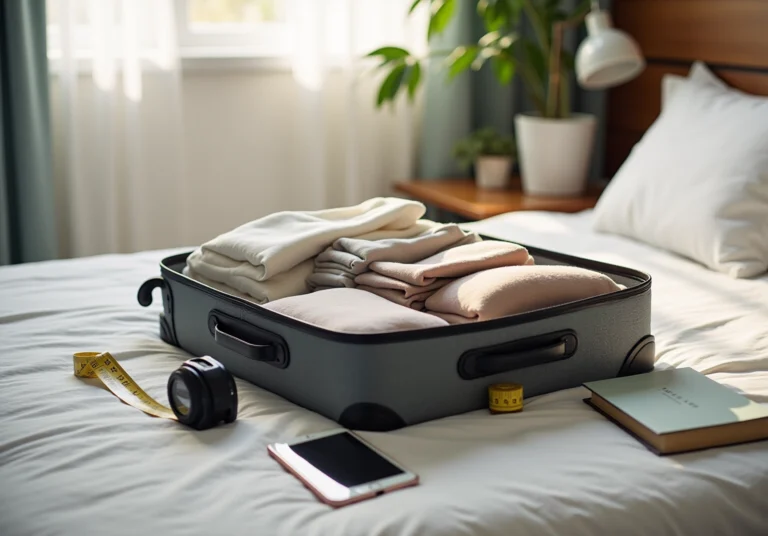Overview
Are you ready to make your travels smoother? This article is packed with essential tips to help you comply with airline-approved carry-on size regulations! The standard dimensions you’ll want to keep in mind are 22 x 14 x 9 inches, but remember, different airlines may have their own variations.
Let’s dive into why accurately measuring your luggage is so crucial. You don’t want any surprises at the airport! Understanding airline-specific rules can save you from unexpected fees, and trust me, no one likes those. Plus, I’ve found that utilizing clever packing strategies like storage cubes can really maximize your efficiency. It’s all about making your travel experience as enjoyable as possible. So, let’s get packing and ensure your next adventure starts off on the right foot!
Key Highlights:
- The standard airline-approved carry-on size is typically 22 x 14 x 9 inches, but varies by airline.
- Frontier Airlines allows a larger carry-on size of 24 x 16 x 10 inches.
- Using storage cubes can help organise belongings and maximise packing efficiency.
- Follow the TSA’s 3-1-1 rule for liquids: containers must be 3.4 ounces or less, packed in a quart-sized bag.
- Different airlines have unique carry-on size and weight restrictions, with budget airlines often imposing stricter limits.
- Accurate measurement of luggage, including wheels and handles, is crucial to avoid extra fees.
- Personal items, such as backpacks, should fit under the seat and typically should not exceed 18 x 14 x 8 inches.
- Weight limits for carry-on luggage usually range from 15 to 22 pounds, depending on the airline.
- Solid food items are allowed in carry-on luggage, while sharp objects and flammable items are prohibited.
- Soft-sided luggage offers flexibility and can be easier to fit in overhead compartments.
- Cheque for additional fees for carry-on luggage, especially with low-cost airlines, to avoid unexpected charges.
- Researching customer reviews can help in selecting durable and user-friendly luggage.
- Planning ahead and creating packing lists can enhance organisation and reduce travel stress.
Introduction
Navigating the world of air travel can often feel like a puzzle, can’t it? Especially when it comes to understanding carry-on size regulations! With airlines frequently changing their policies and dimensions, knowing the ins and outs of airline-approved carry-on sizes is essential for you as a traveler.
This article offers ten essential tips that not only clarify these often-confusing guidelines but also empower you to pack smarter and avoid those costly surprises at the airport.
What happens when you miscalculate your bag size? The stakes are high, and the consequences can be frustrating—so how can you ensure compliance while maximizing packing efficiency?
The Design Tourist: Expert Guidance on Airline Approved Carry-On Sizes
The Design Tourist, guided by Karen LeBlanc, is your go-to resource for navigating the ins and outs of airline approved carry on size! Did you know that the dimensions for the airline approved carry on size are usually set at 22 x 14 x 9 inches? This means you can confidently stow your luggage in the overhead compartments of most carriers. But remember, it’s essential to check individual airline regulations, as the airline approved carry on size can differ quite a bit. For instance, Frontier allows a slightly larger carry-on at 24 x 16 x 10 inches!
Maximizing storage efficiency is key to a smooth travel experience. Have you tried using storage cubes? They’re fantastic for organizing your belongings, making it easy to grab what you need without rummaging through your bag. Plus, packing versatile clothing in neutral colors that coordinate can really cut down on the number of items you need. This not only saves space but also simplifies your outfit choices—who doesn’t love that?
Karen LeBlanc also emphasizes the importance of sticking to the TSA’s 3-1-1 liquids rule. This rule allows only liquids in containers of 3.4 ounces or less, all fitting into a single quart-sized zip-top bag. Following this guideline is crucial to avoid any delays at security checkpoints.
Travel blogs like The Design Tourist focus on providing expert advice on airline rules and luggage management, including the airline approved carry on size, helping you travel with confidence. By sharing practical tips and personal stories, this blog turns the often daunting task of packing into a fun opportunity for creative expression and cultural appreciation. So, are you ready to embark on your next adventure with these insights in mind?
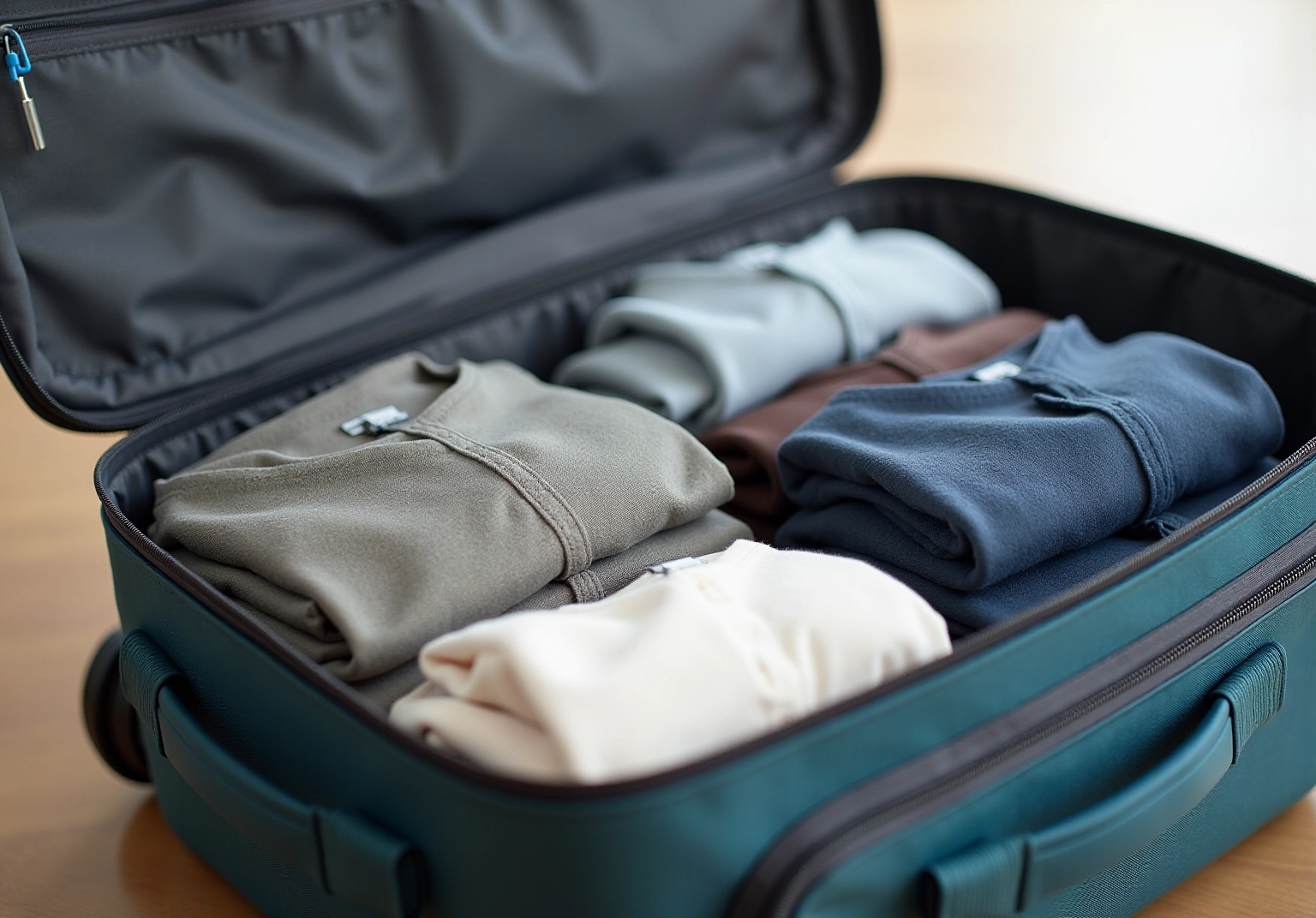
Know Your Airline’s Carry-On Size Restrictions
Airlines have different carry-on size restrictions, typically within the airline approved carry on size of 22 x 14 x 9 inches and slightly larger dimensions. For example, while most U.S. carriers stick to the standard size, low-cost airlines like Spirit and Frontier often have stricter limits. This can lead to unexpected charges or even the need to check your bags at the gate! Southwest Airlines allows carry-ons up to 24 x 16 x 10 inches, while Spirit Airlines has a limit of 22 x 18 x 10 inches.
But that’s not all—many carriers also impose weight restrictions for carry-on items, often ranging from 15 to 40 pounds. Keep in mind that exceeding the size limit by just an inch can result in enforcement at the gate, especially with those budget-friendly carriers. To avoid any surprises, I recommend checking your travel provider’s website for the latest policies regarding airline approved carry on size, as these can change frequently.
Experts suggest measuring your baggage, including wheels and handles, to ensure you’re compliant with airline standards. As Dan Cooper wisely points out, ‘TSA’s primary focus is on security screening and enforcing rules like the 3-1-1 liquid restriction.’ This really highlights the importance of understanding airline-specific regulations. By grasping these nuances, you can maximize your packing space and enhance your overall travel experience!
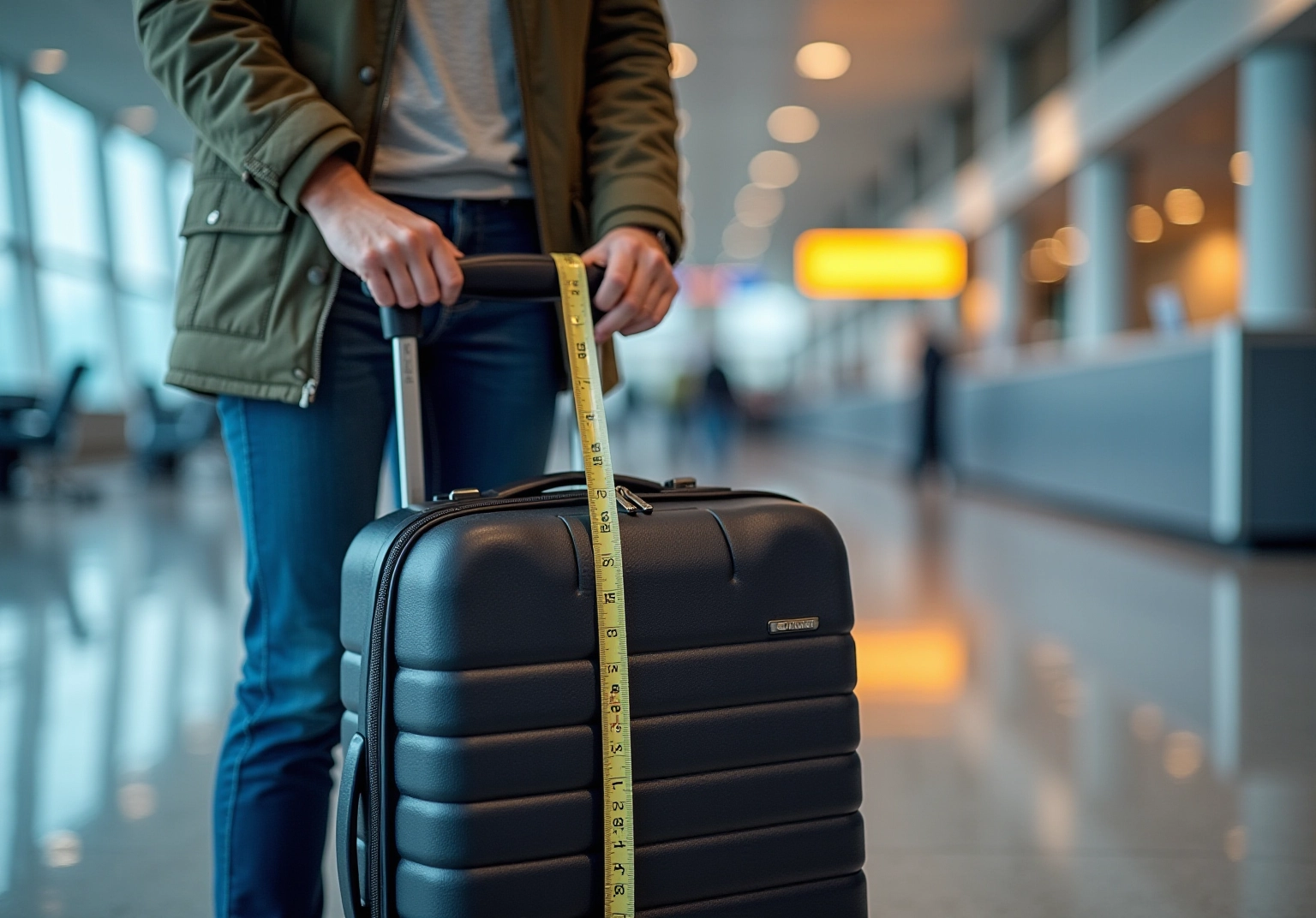
Measure Your Luggage Dimensions Precisely
To avoid any last-minute surprises at the airport, it’s super important to ensure your bag dimensions meet the airline approved carry on size! Grab a tape measure and check the height, width, and depth of your bag, including those pesky wheels and handles that stick out. Sticking to the airline approved carry on size is crucial—after all, even a tiny deviation can lead to extra fees or the need to check your bag. Travel experts often say that accurate measurements can really save you from unnecessary costs and help streamline your boarding experience.
Think about it: many travelers have successfully dodged fees just by ensuring their bags comply with the airline approved carry on size regulations. It’s a great reminder of how diligence can pay off! As Shane Koyczan wisely puts it, “Don’t let your belongings define your journeys; each life unfolds uniquely.” This really highlights the importance of choosing high-quality luggage that adheres to airline approved carry on size requirements. And with the global travel bag market expected to surpass $79.69 billion by 2027, it’s clear there’s a growing demand for durable and practical travel solutions. So, let’s get packing smartly!
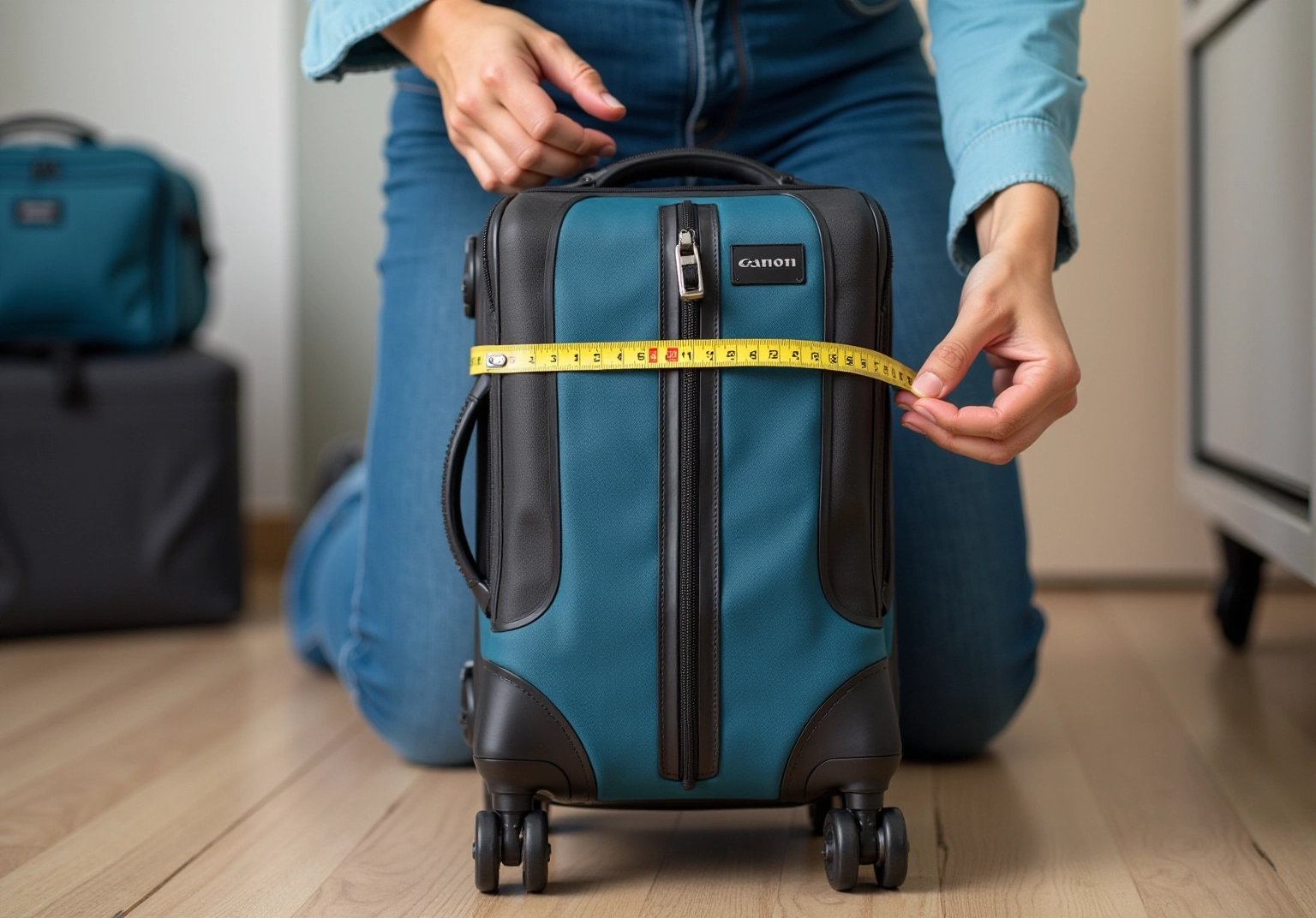
Differentiate Between Carry-On Bags and Personal Items
When it comes to packing for your adventure, carry-on bags are your trusty companions! They’re typically larger and must fit snugly in the overhead compartment to comply with the airline approved carry on size. On the other hand, personal items—think backpacks or purses—should slide comfortably under the seat in front of you. Most airlines allow you to bring one of each, so make sure to choose wisely!
For example, a personal item should generally not exceed 18 x 14 x 8 inches. This way, you can keep all your essentials close at hand during the flight, making your journey even more enjoyable. So, what will you pack for your next trip? Let the excitement begin!
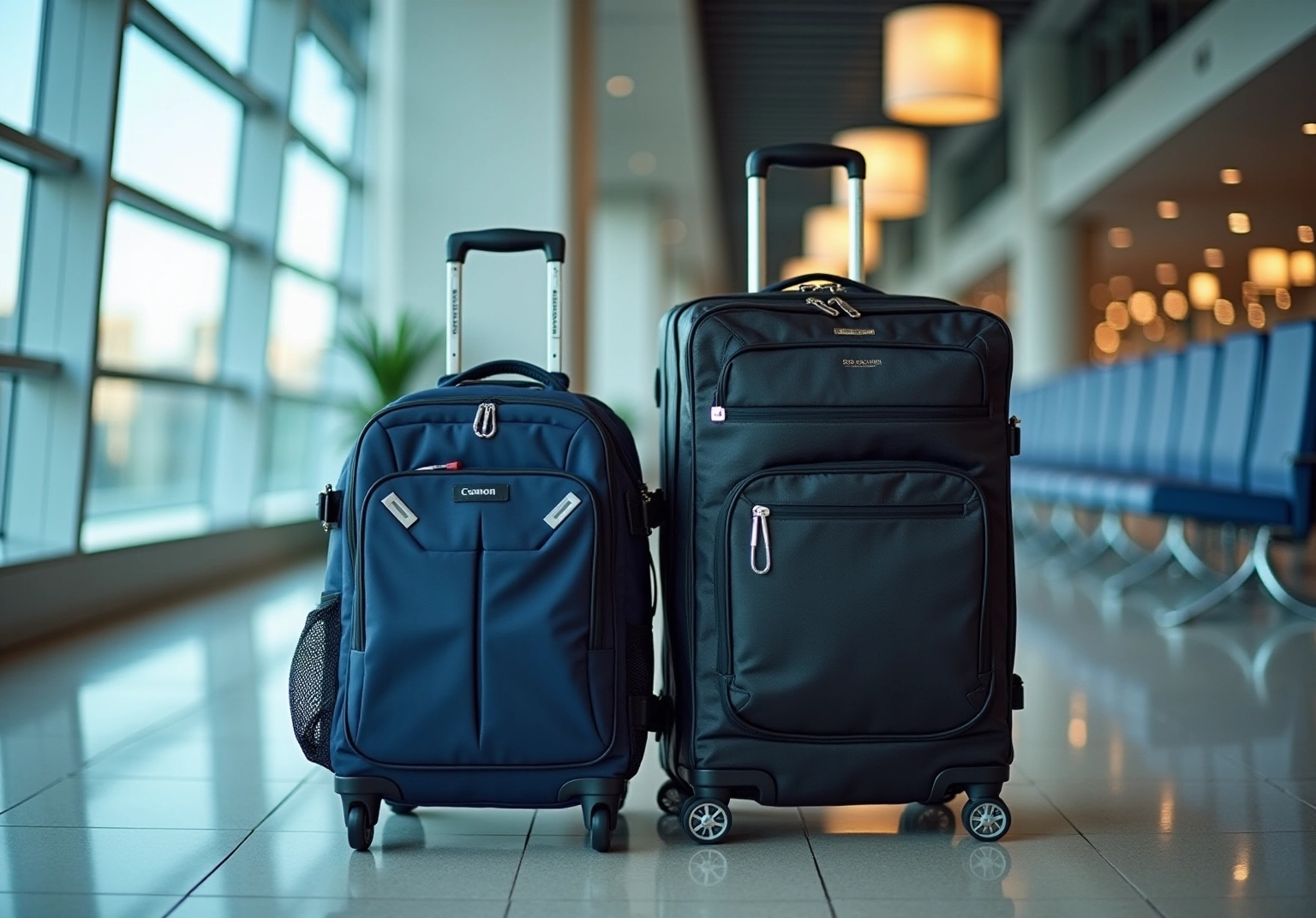
Understand Weight Limits for Carry-On Luggage
Airlines often set weight limits for hand baggage, typically ranging from 15 to 22 pounds (7 to 10 kg). With the growing focus on baggage compliance, it’s a smart move to weigh your bag before heading to the airport. This simple step can save you from unexpected charges or the hassle of checking your belongings! Investing in a portable luggage scale can be a game changer, allowing you to confirm that your bag meets the specific weight limits set by your airline.
For instance, British Airways offers a generous carry-on weight allowance of up to 23 kg, while most carriers enforce a combined weight limit for carry-on luggage and personal items of 10 kg. Keep in mind that exceeding these limits can lead to extra costs or the need to check in oversized bags. Also, remember that personal item dimensions must not exceed 40 cm x 30 cm x 15 cm (15.7 inches x 11.8 inches x 5.9 inches)—this is key for packing efficiently!
By staying informed about airline approved carry on size and preparing ahead of time, you can navigate airline policies with ease and enjoy a smoother travel experience. Plus, with new standardized hand baggage regulations rolling out in the EU from September 2024, understanding these rules is more crucial than ever!
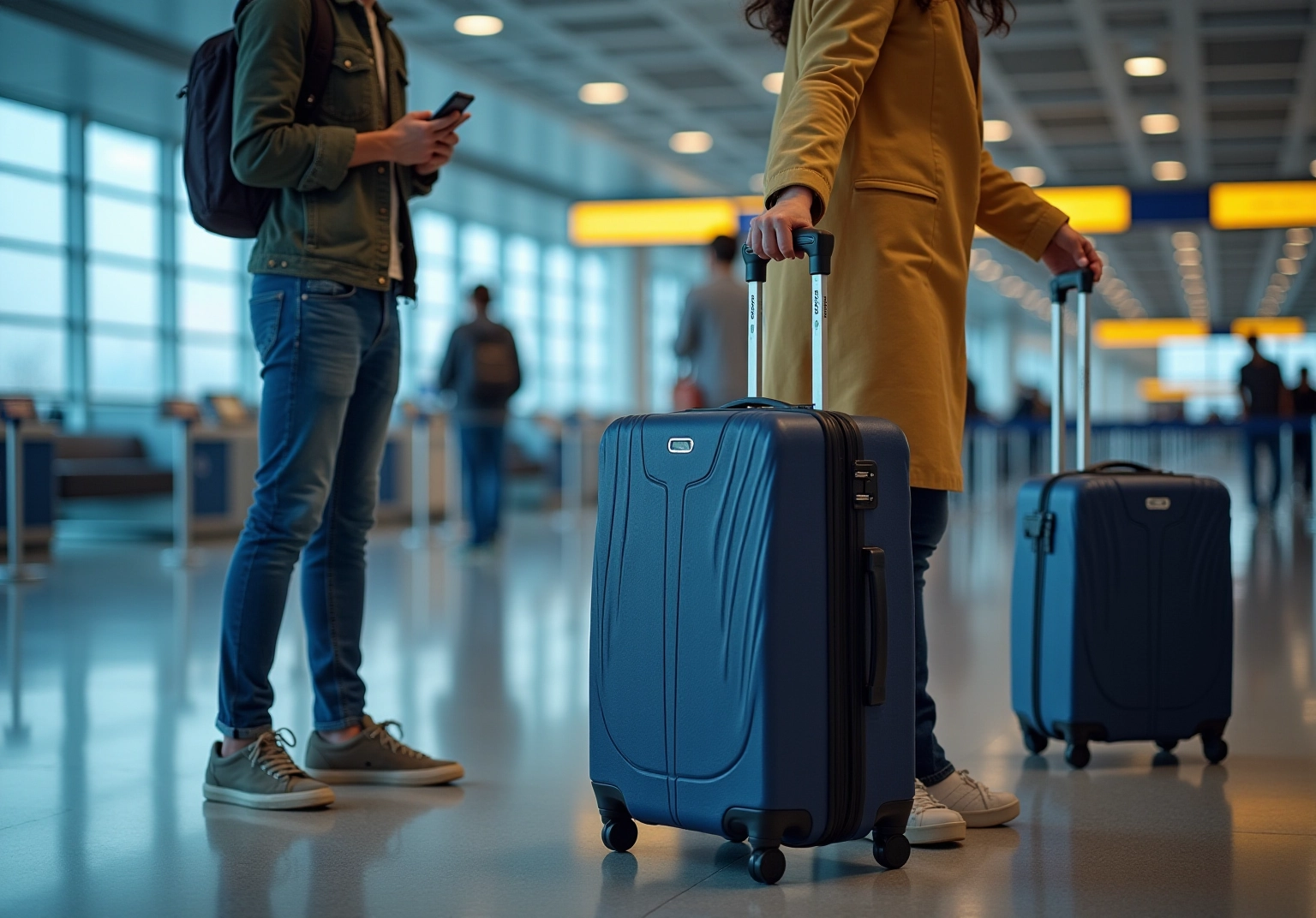
Know What You Can Pack in Your Carry-On
Understanding TSA regulations can really make your travel experience smoother! When you’re packing your hand luggage, remember that liquids need to be in containers of 3.4 ounces (100 milliliters) or less, all fitting snugly within a single quart-sized bag. This handy rule, known as the 3-1-1 rule, is here to help speed up security checks and keep delays to a minimum. Also, keep in mind that sharp objects, flammable items, and certain sports gear are a no-go in your hand baggage.
On a brighter note, solid food items (not liquids or gels) can travel with you in your hand luggage or checked bags, which is perfect for those snack-loving travelers! Just last year, in 2023, the TSA intercepted a whopping 6,737 firearms at airport security checkpoints, which really underscores how important it is to follow these regulations. And don’t forget, items that look like explosives, such as realistic replicas, aren’t allowed either.
If you need to bring larger quantities of medically necessary liquids, you can do so in reasonable amounts, just make sure to declare them at the checkpoint. For the latest updates on what you can pack, always check out the TSA’s ‘What Can I Bring?’ page or use the ‘Can I Bring?’ feature on the TSA website or mobile app for real-time help.
Travel security experts often emphasize the importance of double-checking your bags before heading to the airport—because even small oversights can lead to significant delays or penalties. By getting familiar with these guidelines, you’ll be able to navigate the security process more efficiently and enjoy a hassle-free journey. Happy travels!
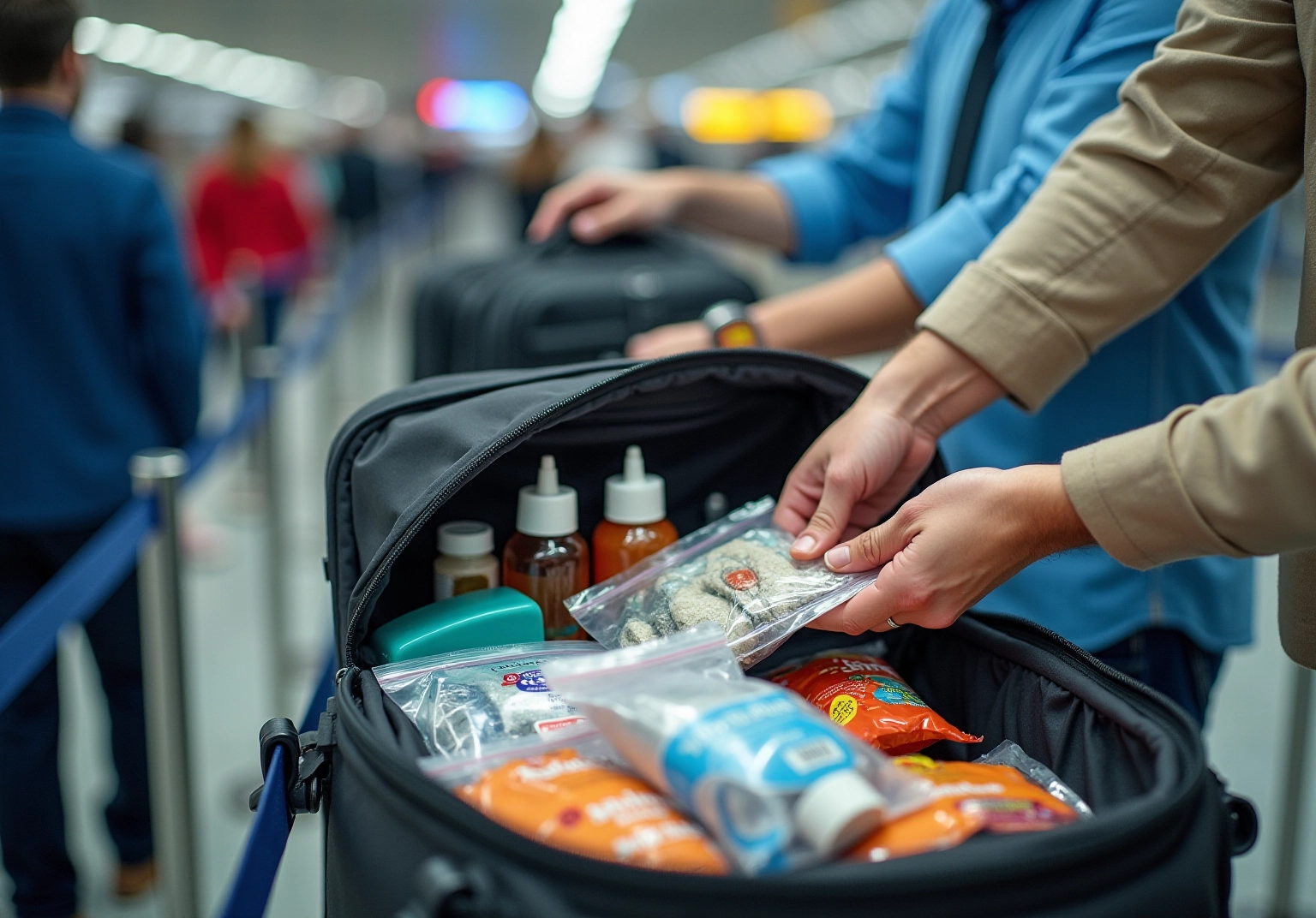
Consider Soft-Sided Luggage for Flexibility
Consider Soft-Sided Luggage for Flexibility!
Soft-sided luggage really shines when it comes to flexibility! This adaptability means you can fit your bags into tighter spaces, like those overhead compartments, without the struggle that often comes with rigid suitcases, especially if they are of airline approved carry on size. Plus, many soft-sided bags come with exterior pockets, giving you quick access to essentials like travel documents and snacks—talk about enhancing convenience during transit! For instance, the Dagne Dover Seattle bag weighs 10 lb and has a capacity of 41L, making it a practical choice for your travels.
Investing in a high-quality soft-sided carry-on can significantly boost your storage capabilities. It’s an ideal choice if you prioritize both functionality and ease of use. When selecting the right soft-sided bag, think about factors like weight, size, and the number of compartments. Many travelers express a preference for soft-sided bags because they can handle different storage needs while being lightweight—especially handy when you’re keeping an eye on those flight weight limits!
Experts highlight that the flexibility of soft-sided bags not only makes maneuvering easier but also allows for a more personalized packing experience. It caters to the diverse requirements of modern travelers. As Karen LeBlanc puts it, “By combining expert storytelling with practical travel advice, The Design Tourist empowers readers to explore the world with a creative lens.”
With the growing popularity of compact travel bags due to stricter carrier baggage regulations, exploring soft-sided alternatives could really enhance your travel experience. Just remember to check those travel guidelines to ensure your bag complies with the airline approved carry on size specifications!
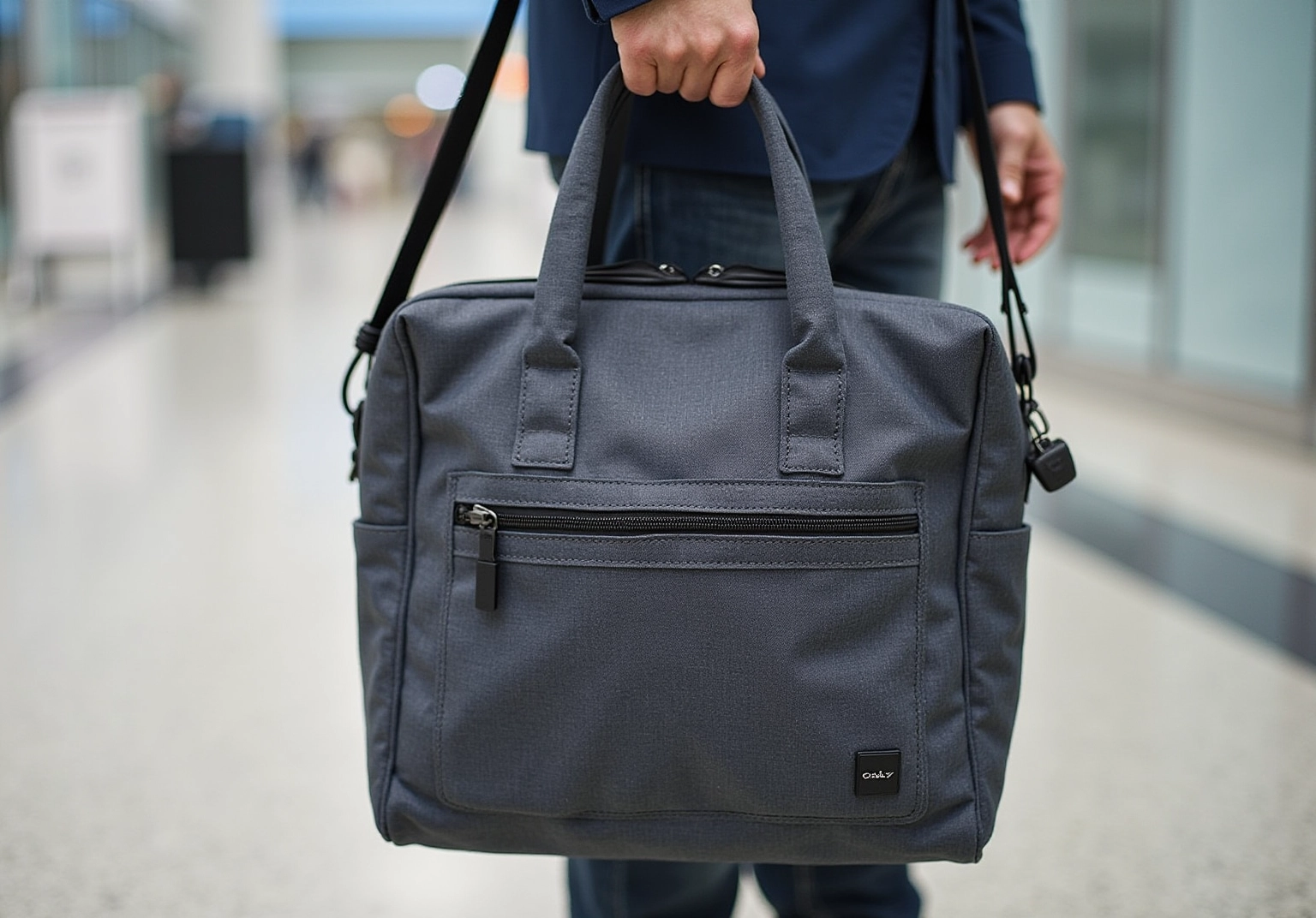
Check for Additional Carry-On Fees
Before you book your flight, it’s super important to check if your airline charges for hand baggage. Did you know that around 70% of low-cost airlines, like Spirit Airlines and Frontier Airlines, have policies that require fees for hand luggage? Sometimes, these fees can even be higher than those for checked bags! Many of these carriers only allow personal items for free, which means you’ll need to budget for those extra costs.
As William McGee, a senior fellow for aviation and travel, wisely points out, “I know most travelers dislike carry-on bag fees, but sadly I believe they’ll keep increasing.” Knowing about these charges ahead of time can save you from unpleasant surprises at the airport and help you plan your packing strategy effectively.
In fact, in 2024, U.S. carriers raked in a staggering $7.27 billion from checked baggage fees—talk about a financial hit! So, to dodge those baggage fees, always check your airline’s specific policies before you start packing!
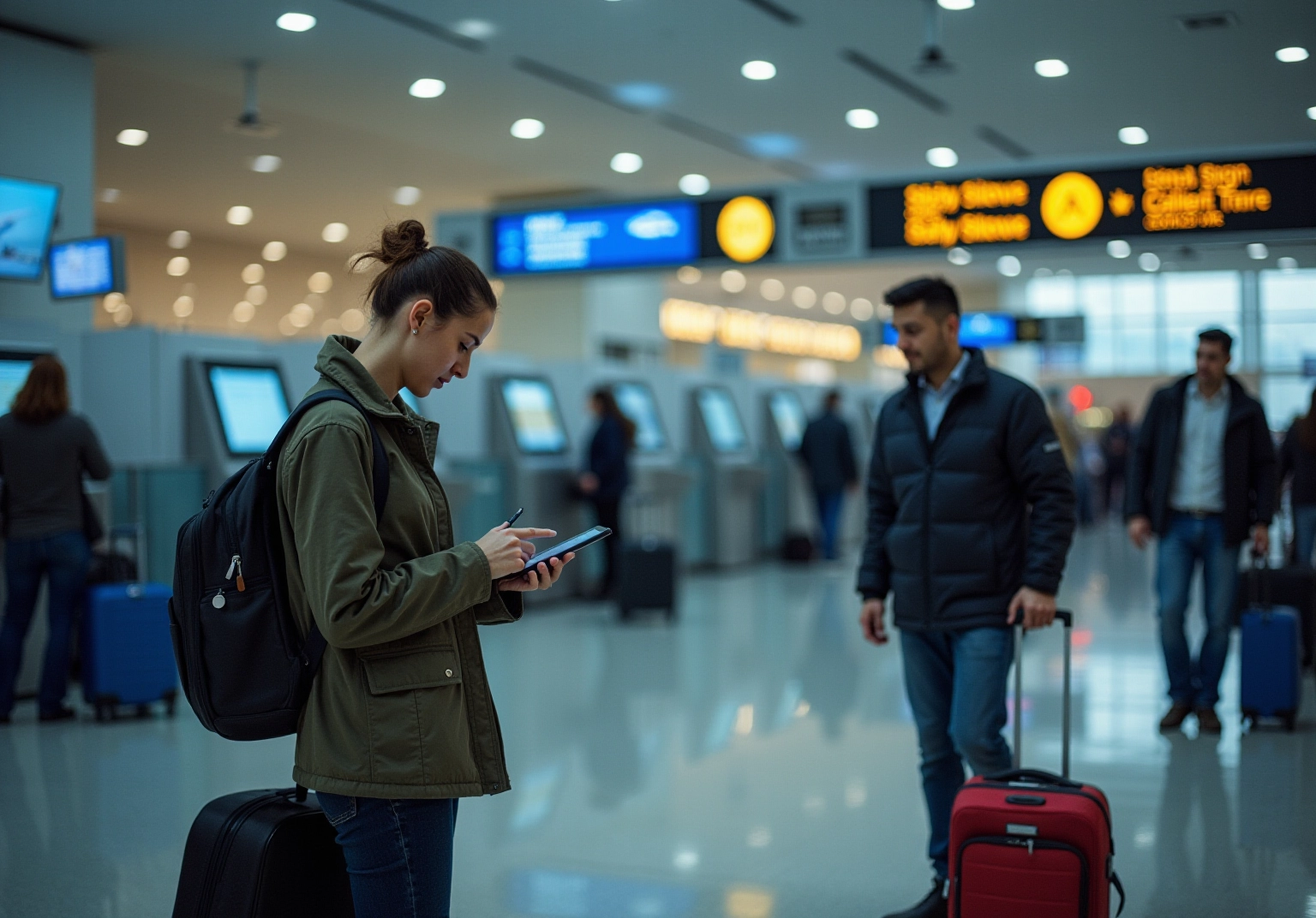
Research Customer Reviews for Luggage Choices
When you’re on the hunt for the perfect travel bag, take a moment to dive into customer reviews! Look for insights on:
- Durability
- Ease of use
- Overall satisfaction
Websites like Amazon, Travelpro, and luggage-specific forums are treasure troves of information, offering you a peek into which bags truly shine under various travel conditions. This way, you can confidently choose the best option for your adventures ahead!
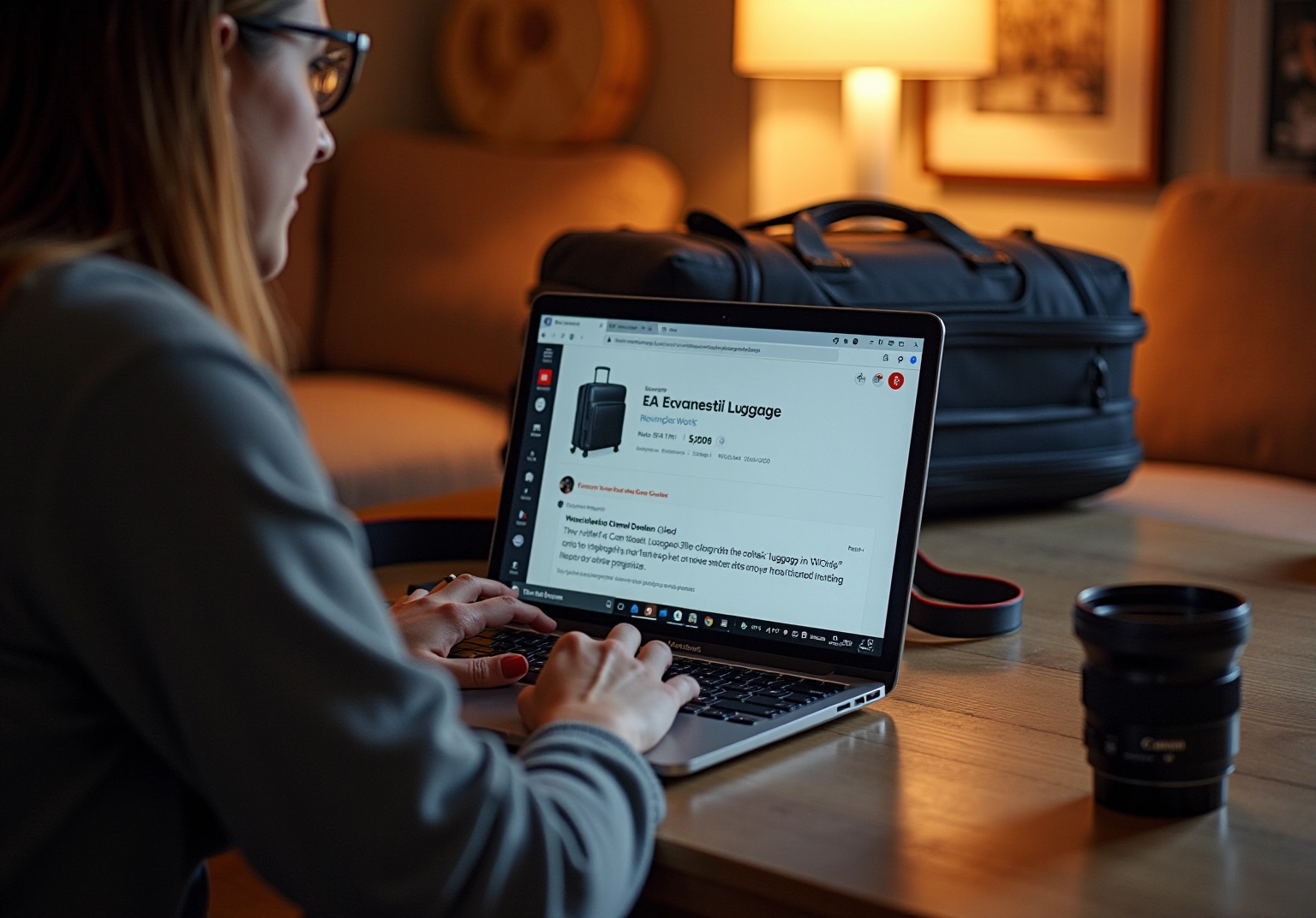
Plan Ahead for Your Carry-On Needs
To ensure a hassle-free travel experience, it’s crucial to plan your carry-on needs well in advance! Did you know that about 60% of travelers compile lists before their trips? This simple step can significantly enhance your organization and reduce stress. Start by outlining all your essentials based on the activities you have planned at your destination. For instance, if you’re heading to a beach, don’t forget your swimwear and sun protection! On the other hand, a city trip might call for comfortable walking shoes and a light jacket. Plus, with a whopping 125% increase in searches for unique accommodations, it’s clear that travelers are becoming more thoughtful in their planning!
Now, let’s talk about storage strategies to maximize space and efficiency. Rolling your clothes instead of folding them can save room and minimize wrinkles—who doesn’t love that? Consider using storage cubes to keep your items organized and easily accessible. And here’s a tip: selecting adaptable clothing that can be mixed and matched will allow you to travel with less baggage! It’s also wise to think about opportunities to wash clothes during your trip, which can really lighten your load.
As travel journalist Karen LeBlanc wisely observes:
- “Preparing for a trip can be challenging to perfect—common mistakes include overloading, underloading, or not including the appropriate items.”
- “It helps to do the thinking in advance, so that you can simply gather your stuff, add it to your case and tick it off your list.”
By considering your travel requirements and organizing in advance, you can create an efficient list that ensures you have all the essentials for your journey, making your travel experience even more enjoyable. And don’t forget to check the weather at your destination before you pack to ensure you’re ready for any conditions!
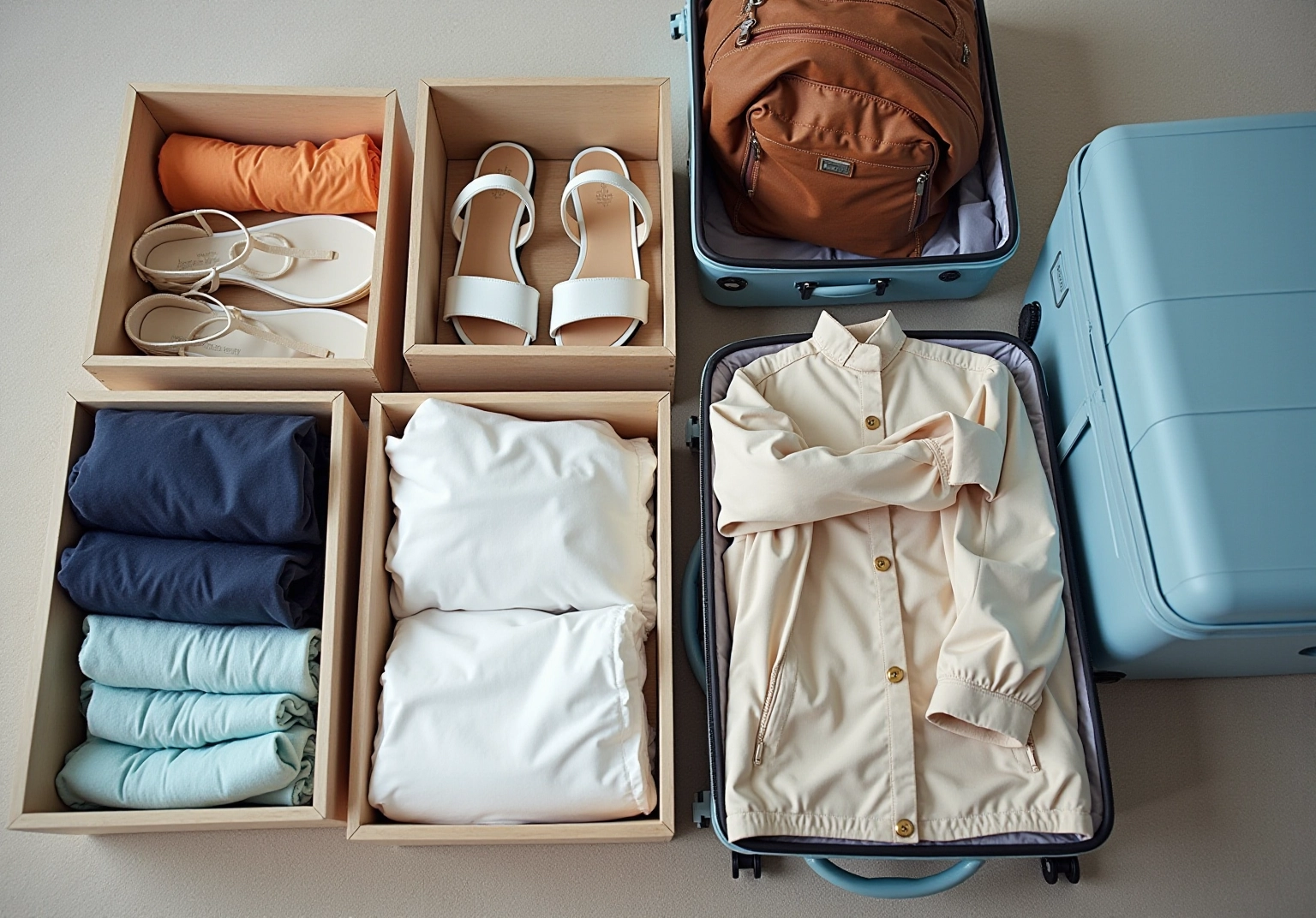
Conclusion
Understanding airline-approved carry-on sizes is crucial for any traveler looking to navigate the skies without unnecessary stress! By familiarizing yourself with the specific dimensions, weight limits, and packing regulations set by various airlines, you can avoid unexpected fees and ensure a smoother boarding experience. The insights shared throughout this article highlight the importance of preparation and awareness in achieving compliance with airline policies.
Key takeaways include:
- The significance of measuring your luggage accurately
- Differentiating between carry-on bags and personal items
- Adhering to TSA regulations regarding liquids
- Considering the flexibility of soft-sided luggage
- Being aware of potential carry-on fees
Ultimately, taking the time to plan ahead and research specific airline regulations can transform the often daunting task of packing into an organized and enjoyable process. Embracing these guidelines not only saves you time and money but also allows for a more relaxed journey. So, as you prepare for your next adventure, remember to pack smartly, stay informed, and enjoy the journey ahead!
Frequently Asked Questions
What are the standard dimensions for airline approved carry-on luggage?
The standard dimensions for airline approved carry-on luggage are usually set at 22 x 14 x 9 inches.
Do all airlines have the same carry-on size restrictions?
No, carry-on size restrictions can vary by airline. For example, Southwest Airlines allows carry-ons up to 24 x 16 x 10 inches, while Spirit Airlines has a limit of 22 x 18 x 10 inches.
What should I do to ensure my carry-on complies with airline regulations?
To ensure compliance, measure your luggage dimensions accurately, including wheels and handles, and check your airline’s specific carry-on size policies on their website.
What is the TSA’s 3-1-1 liquids rule?
The TSA’s 3-1-1 liquids rule allows only liquids in containers of 3.4 ounces or less, all fitting into a single quart-sized zip-top bag.
What are the potential consequences of exceeding the carry-on size limit?
Exceeding the carry-on size limit can result in extra fees or the need to check your bag at the gate, especially with low-cost airlines.
How can I maximize storage efficiency in my carry-on?
Using storage cubes can help organize your belongings, and packing versatile clothing in neutral colors can reduce the number of items needed, saving space and simplifying outfit choices.
Why is it important to check individual airline regulations?
Individual airline regulations can differ significantly, and checking them helps avoid unexpected charges or issues at the airport.









